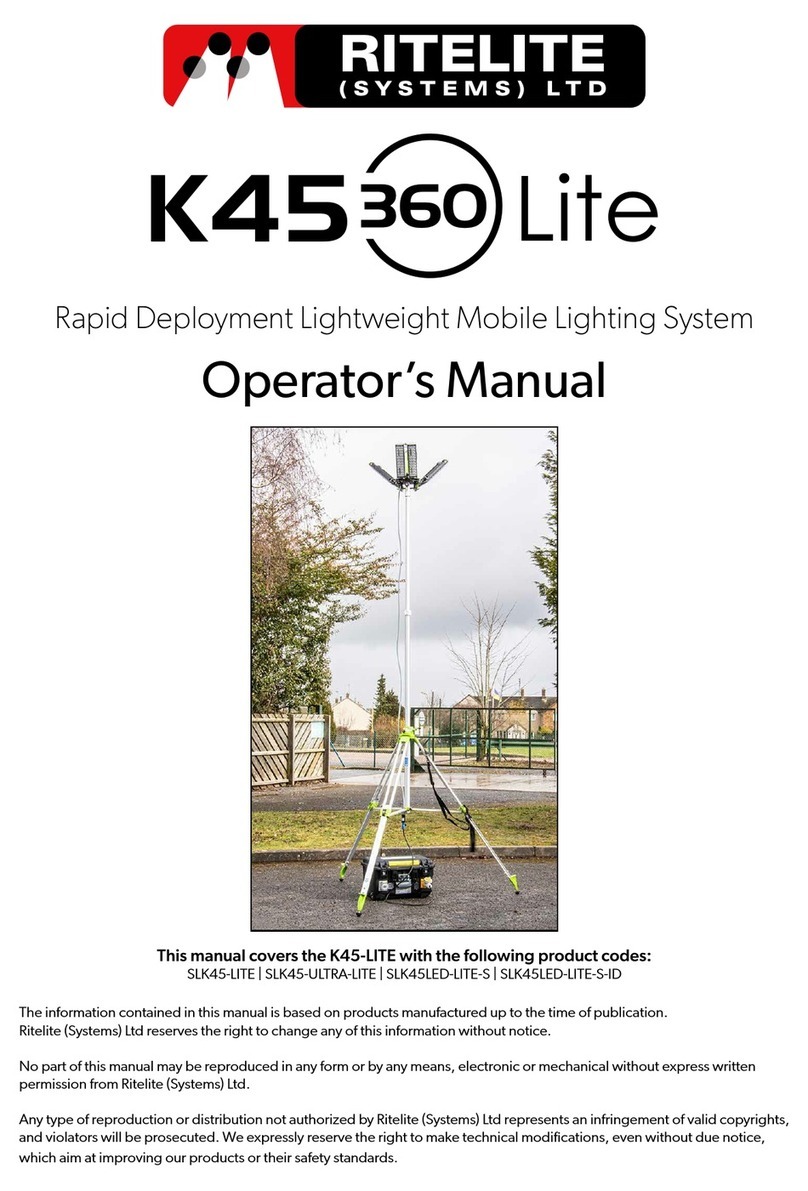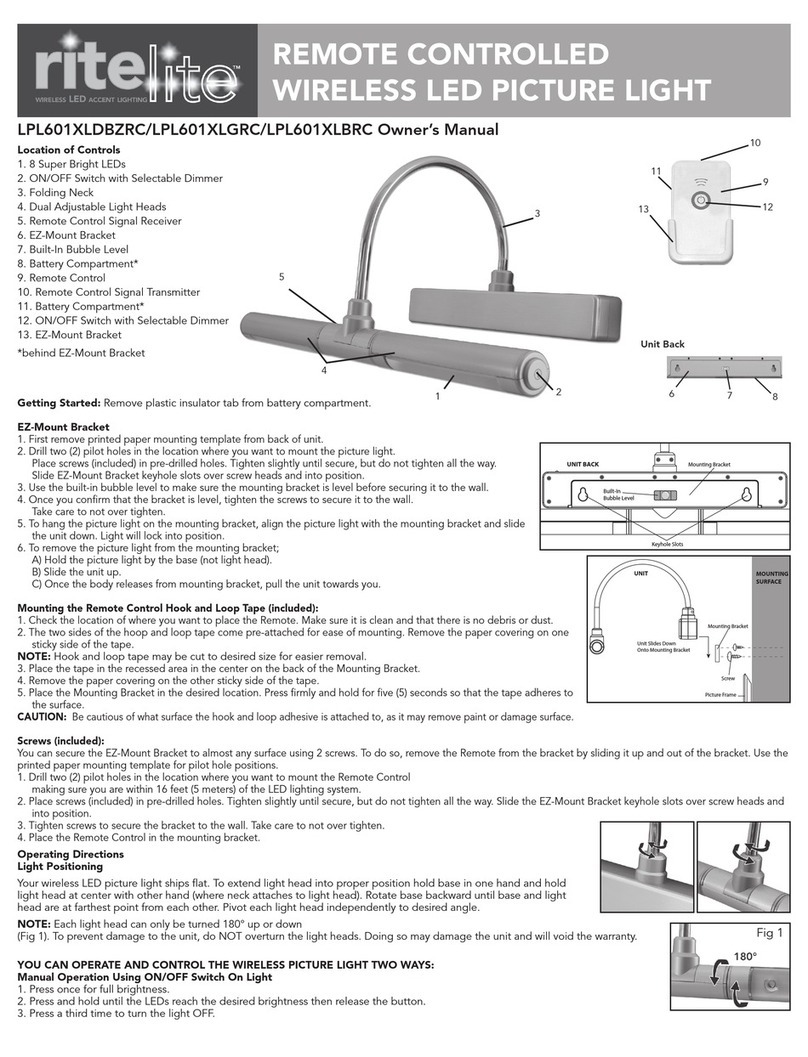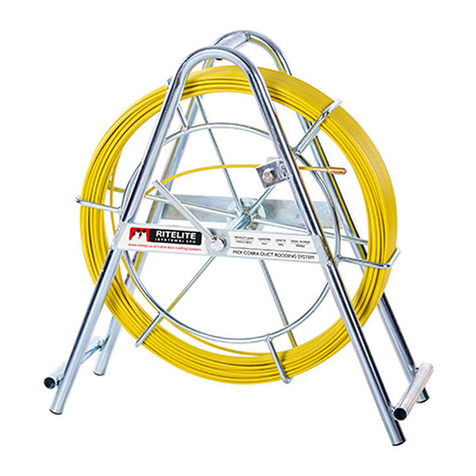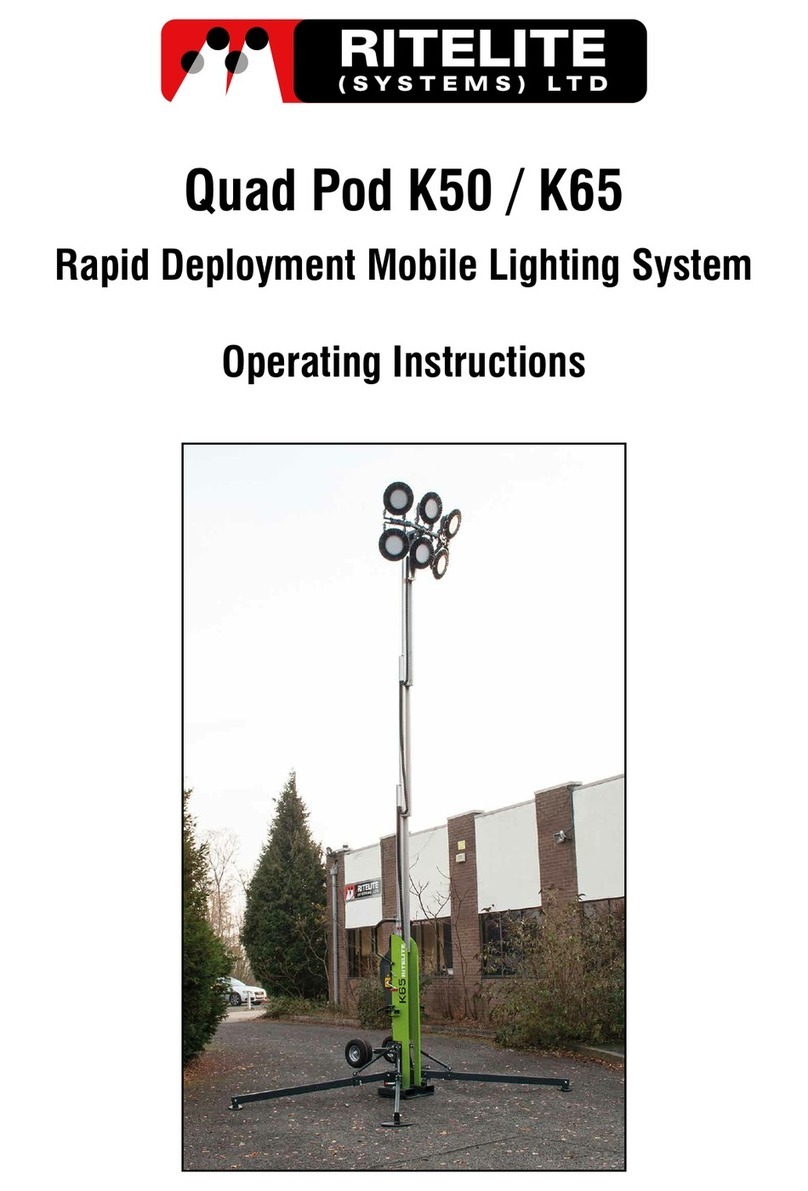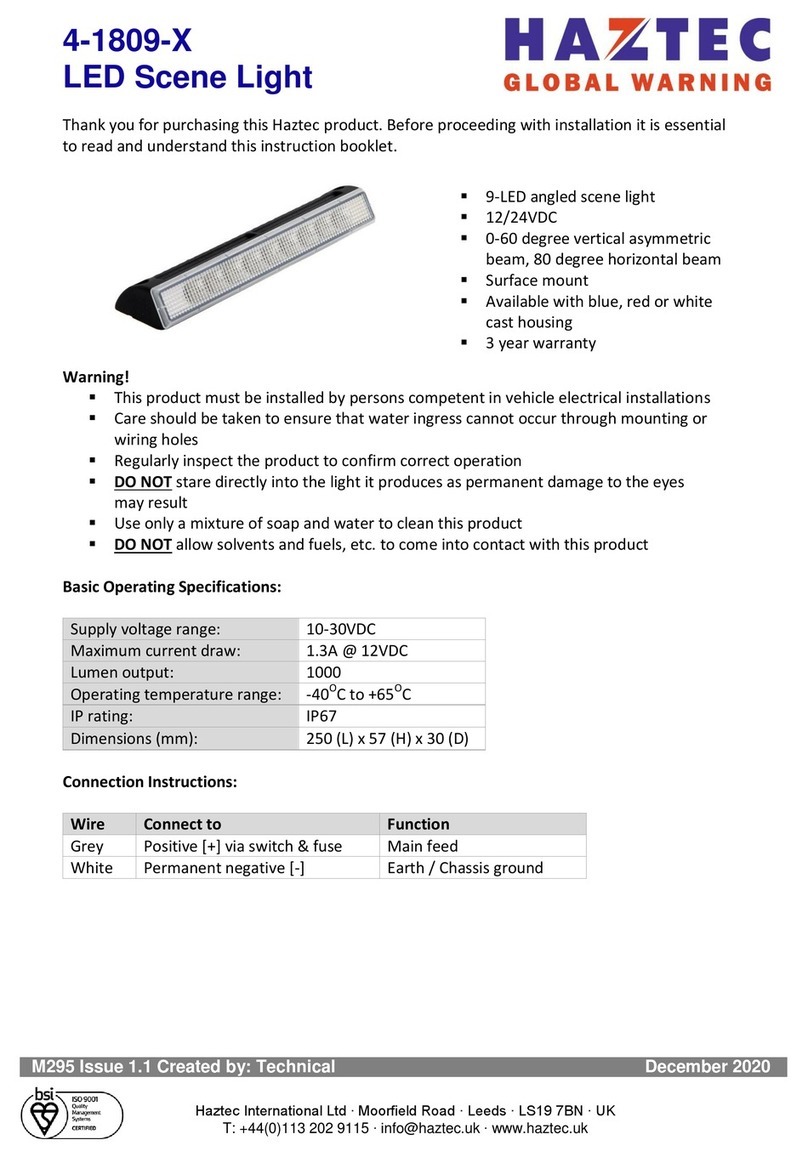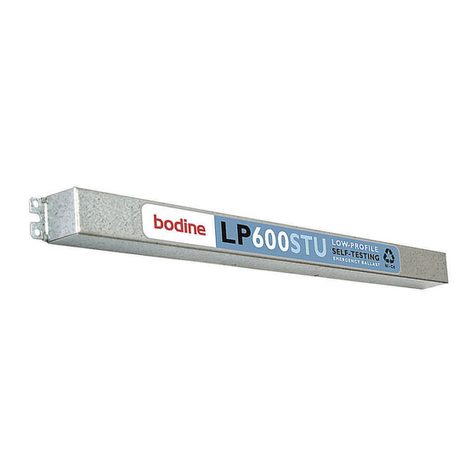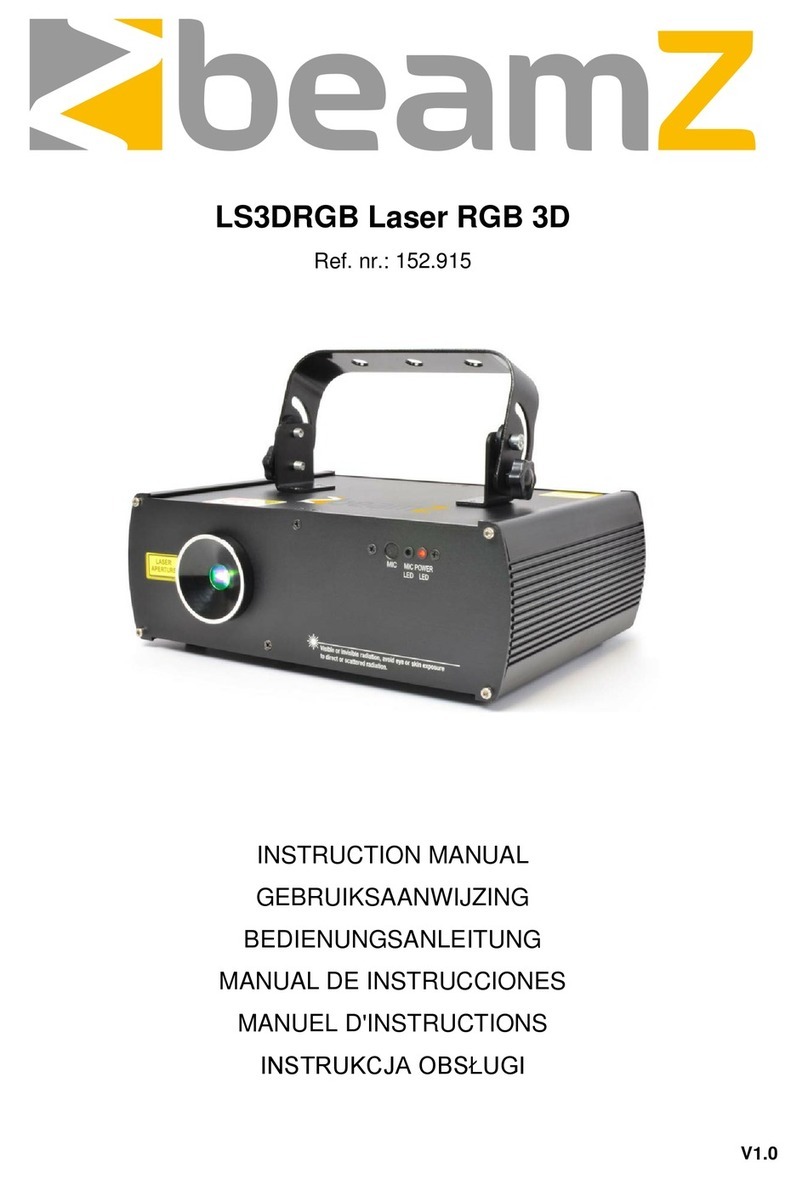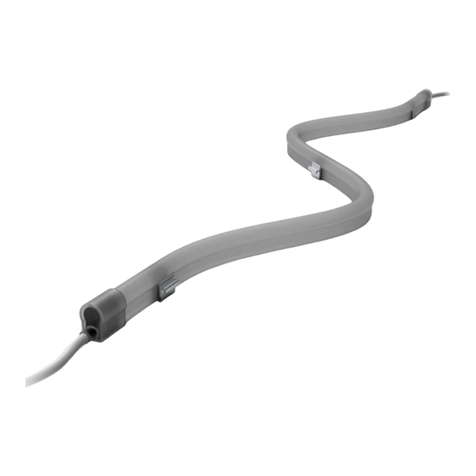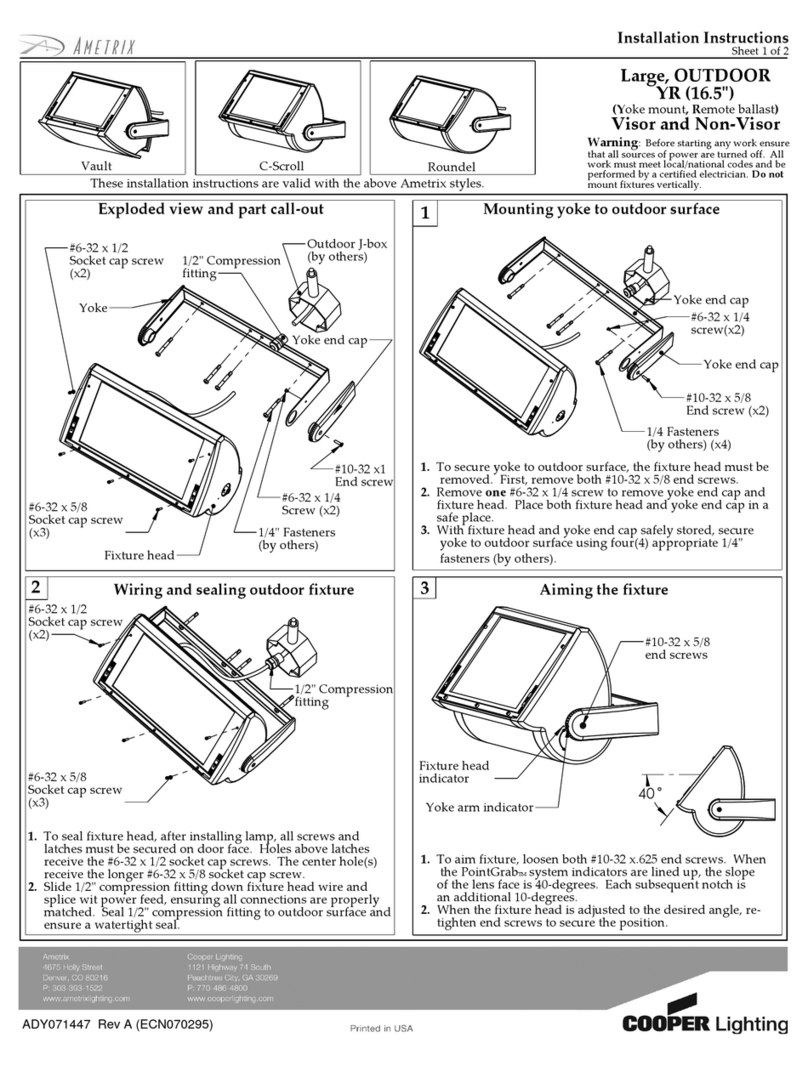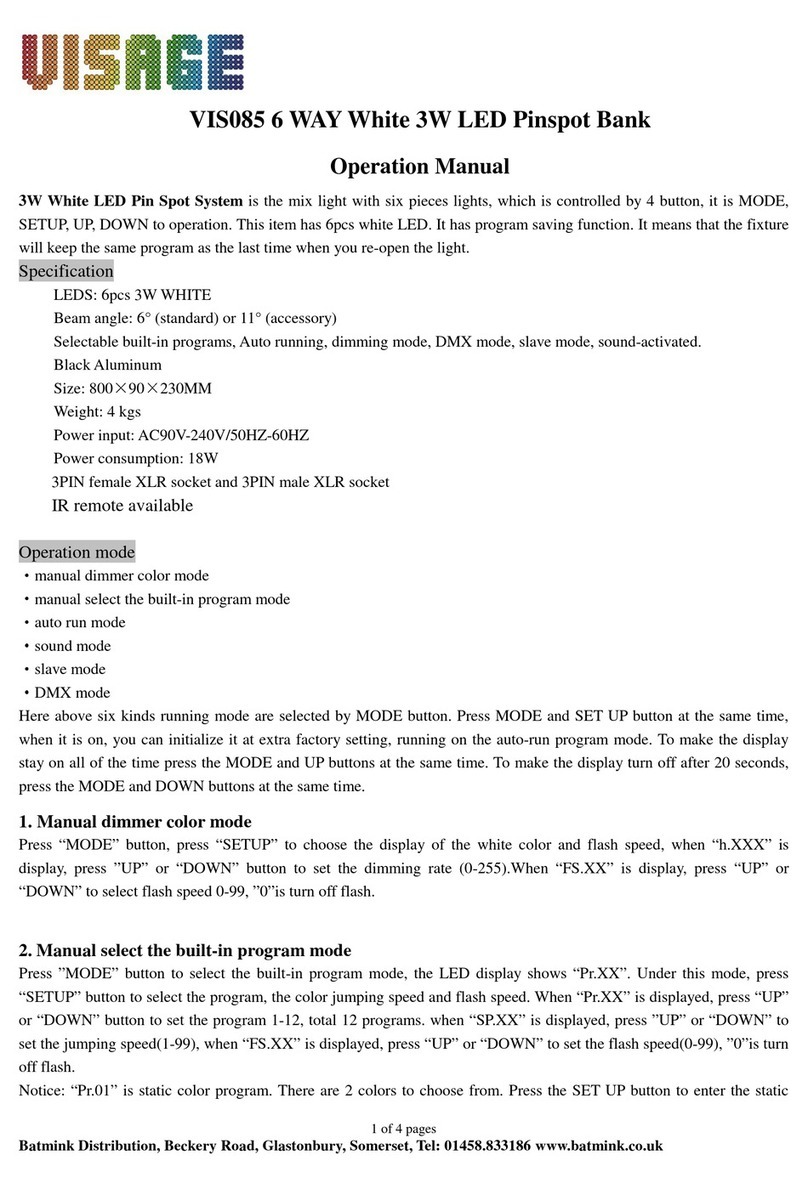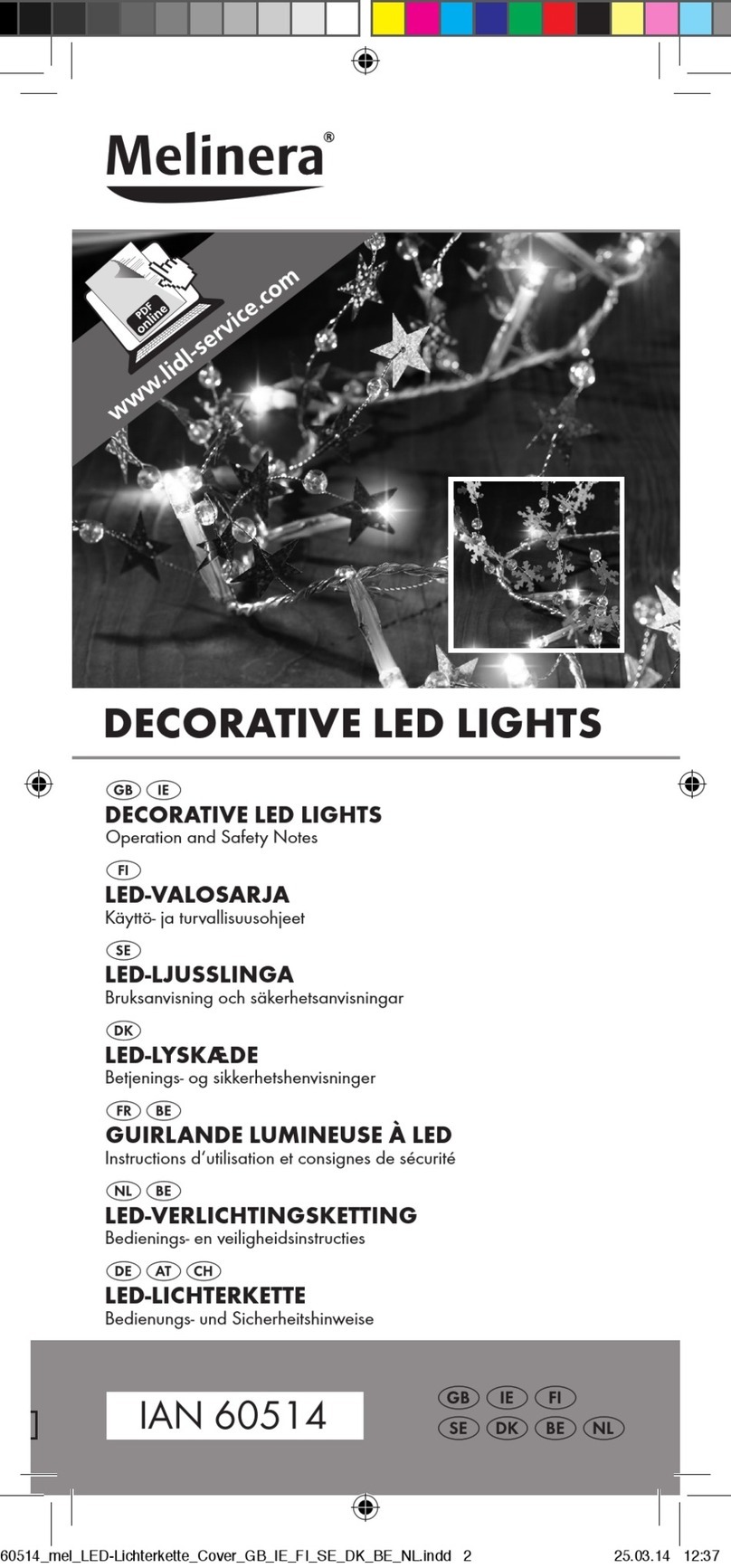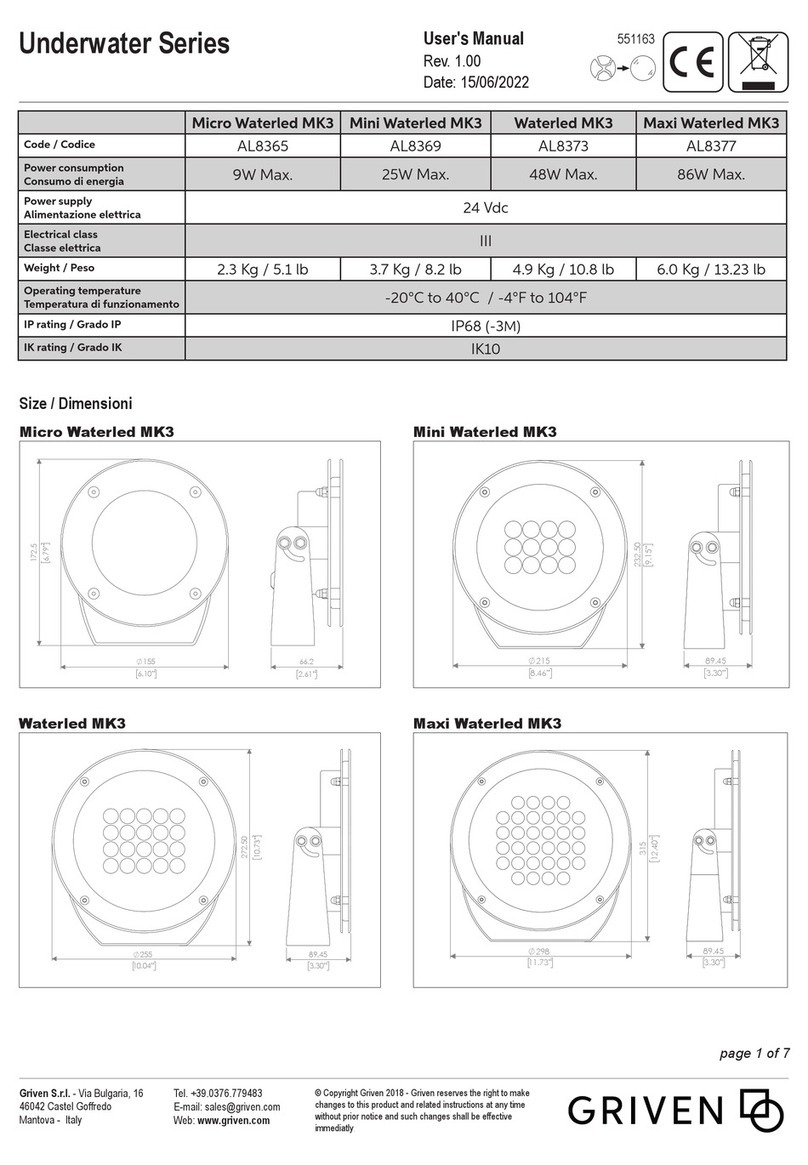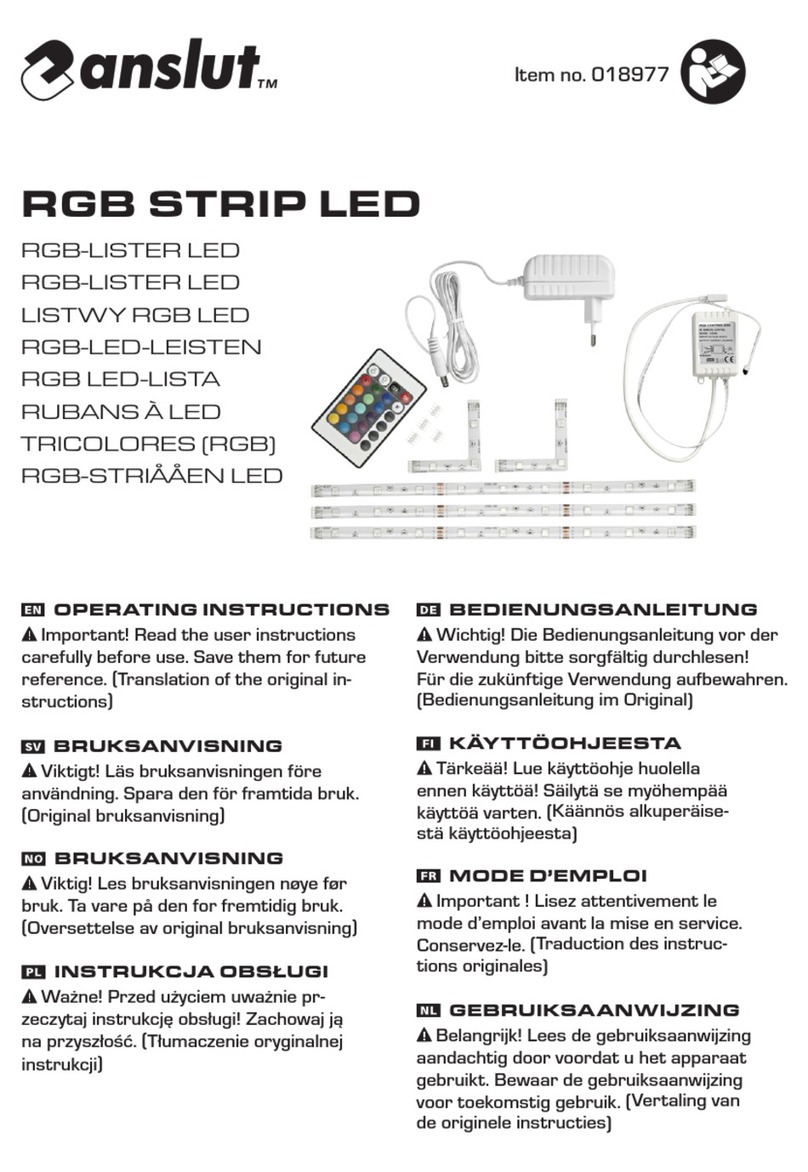Ritelite SPORTS-LITE LSPL/2KIT User manual

Rechargeable, Portable, Sports Training Kit
Operator’s Manual
This manual covers the following Sports-LITE Training Kit product codes:
LSPL/2KIT | LSPL/4KIT | LSPL/6KIT | LSPL/8KIT | LSPL/10KIT | LSPL/12KIT | LSPL/14KIT
www.sports-lite.co.uk

2
IMPORTANT INFORMATION ABOUT YOUR SPORST-LITE
Use this area to record important information about your Sports-LITE kit.
UNIT SERIAL NUMBERS
CONTENTS
SECTION TITLE PAGE NUMBER
Section 1: Introduction & Applications for use 3
Section 2 : General Safety Rules 3
Section 3: Technical Specifications 7
Section 4: Setting up the Sports-LITE 8
4a) Pre-operation Inspection 9
4b) Setup Operation 10
4c) Breaking Down Operation 15
Section 5: Charging and Discharging 19
5a) Operation 19
5b) In Use 21
5c) Battery Care 21
Section 6: Maintenance 22
Section 7: Accessories for the Sports-LITE training kits 23
Section 8: Spares 23
You will be required to supply the products serial numbers when contacting Ritelite (Systems) Ltd or one of
Ritelite’s approved dealers about parts and service.

3
Section 1: INTRODUCTION & APPLICATIONS FOR USE
The Sports-LITE is designed as a simple to use but powerful portable sports LED lighting system. It should only
be used as a device to provide light as designed and for no other purpose.
All users must read, understand and obey these safety rules and operating instructions before operating the
Sports-LITE lighting system. Only trained operators or competent personnel should operate the Sports-LITE.
Failure to follow the instructions and safety rules in this manual may result in serious
injury. It is important that every user understands and observes the safety rules before
setting up or using the Sports-LITE lighting system.
Section 2: GENERAL SAFETY RULES
When using outdoor use portable luminaires, basic safety precautions should
always be followed to reduce the risk of fire, electric shock and personal injury
including the following:
a) Charging must only take place within a dry, indoor environment.
b) Ensure all connectors are pushed fully home and no damage to connecting
cables is visible.
c) Ensure that the battery is fully disconnected for transport and storage.
FALL HAZARDS
• Do not stand on any part of the mast or light heads.
• Do not cling to or pull on the mast.
• Do not climb on or use any part of the Sports-LITE as a platform or step.

4
TIP OVER HAZARDS
• Do not raise the mast until the Sports-LITE is positioned level on a firm, flat, horizontal surface
with all three support legs correctly deployed and locked.
• Do not place the Sports-LITE on a smooth low friction surface even if firm and level. e.g.
snow/Ice. The unit could be prone to sliding sideways in these circumstances.
• Do not set up the Sports-LITE in windy conditions where wind speed and gusts could
exceed 25mph.
• Check area where the product has been set up on a regular basis to ensure stability has not
been compromised through changing conditions, e.g. through wind or water
logged ground.
• Ensure the legs are locked in position before attempting to raise the mast.
• Do not release the leg clamp when the mast is raised or loaded with the light heads.
• Prior to setting up check the area for any possible hazardous conditions.
• Do not use blocks to level the Sports-LITE.
• Do not move the Sports-LITE with a raised load.
• Do not place ladders or scaffolding against any part of the Sports-LITE.
• Do not use the Sports-LITE on a moving or mobile surface or vehicle.
• Do not use the Sports-LITE for any purpose other than that for which it is designed.
• The Sports-LITE is NOT a liing device for anything other than the Sports-LITE light heads.
ELECTROCUTION HAZARDS
• Maintain safe distances away from electrical power lines in accordance with applicable
governmental regulations.
• Keep away from the Sports-LITE if it contacts energized power lines. No-one must touch or
operate the Sports-LITE until power lines are shut off.
• Ensure product is not being set up in a potentially explosive environment – the Sports-LITE is
not an ATEX approved product.
• The Sports-LITE is not designed to be submersed under water.
BODILY INJURY HAZARDS
• The Sports-LITE is designed to be simple to setup and operate by one person however there
may be situations where it is recommended that two people setup the product.
• Do not carry the Sports-LITE sections for long distances in extreme temperatures.
• Do not stare directly into the lights to prevent damage to eyes.
• Set the Sports-LITE up so light spill cannot form a nuisance or danger to others, especially
neighbouring properties.

5
CRUSHING HAZARDS
• Ensure the Sports-LITE is set up on a firm and horizontal flat surface.
• Do not raise the mast until the Sports-LITE is positioned level on a firm horizontal flat surface
with all three support legs correctly deployed and locked.
• Do not allow personnel under the Sports-LITE when the mast is raised or lowered.
• Keep hands and fingers away from any potential pinch points.
• Never move the Sports-LITE with the mast partly or fully raised.
COLLISION HAZARDS
• Ensure the area around the product and above the product is clear of any possible
obstructions before starting to set the Sports-LITE up.
• Use common sense and planning when transporting the Sports-LITE on any incline or slope.
• Make sure when loading the Sports-LITE into a vehicle or trolley that it is securely mounted /
retained so it cannot fall off or move in such a way that it could harm other items or personnel.
DAMAGED PRODUCT HAZARDS
• Do not use a damaged Sports-LITE or one that is not working properly.
• Do not use a Sports-LITE with a damaged tripod or battery.
• Conduct a thorough pre-operation inspection prior to each use.
• Be sure that all labels are in place and legible.
• Do not use if there are any visible damaged parts. Contact your dealer to arrange for spares
or repair options.
• Do not use any type of abrasive or strong chemicals to clean the Sports-LITE.
• Do not attempt to defeat / modify any of the locks or catches.
IMPROPER USE HAZARD
• Never leave a Sports-LITE unattended with the tripod raised unless a full risk assessment
for the application they are being used for has been undertaken by a competent person.
Unauthorized personnel may attempt to operate the Sports-LITE without proper instruction
potentially causing injury to themselves or others.
• Do not place the Sports-LITE on a smooth low friction surface even if firm and level. e.g.
snow/Ice. The unit could be prone to sliding sideways in these circumstances.
• The Sports-LITE must only be operated in a vertical position from a horizontal base.
• The device is to be used only for its prescribed purpose. Any use other than that mentioned
is considered to be a case of misuse.
• The user/operator, and not the manufacturer shall be liable for any damage or injury resulting
from such cases of misuse.
• It is imperative to observe the local accident prevention regulations.
• The same applies for the general rules of occupational health and safety.
• The manufacturer is not liable for indirect consequential damage and financial loss.

6
• The manufacturer shall not be liable for any changes made to the device nor for any damage
resulting from such changes.
• The Sports-LITE is not designed to be setup / used on a live public highway.

7
Section 3: TECHNICAL SPECIFICATIONS
SPORTS-LITE WEIGHTS / DIMENSIONS
PRODUCT CODE LSPL/**KIT
TOTAL SYSTEM WEIGHT 10.65Kg (Light head, battery and tripod)
LIGHT HEAD
WEIGHT (Including battery) 4.4Kg
DIMENSIONS (W x H x D) 300mm x 250mm x 100mm
TRIPOD
WEIGHT 6.25Kg
CLOSED DIMENSIONS 1540mm x ø140mm
OPEN DIMENSIONS 3000mm x ø1950mm
ELECTRICAL
Charger - Input 100-240V 1A Max AC 50/60Hz 55W
Mains input via 110V/240V plug/cable as per customer/country specific requirements.
Check with Ritelite (Systems) Ltd for your specific requirements.
Battery – 7S Lithium Ion 7.8AH nominally 25.9V
Light Head – 80W
Protection Class: IP65
LED light colour temperature 6500K daylight white
80W
IP65
6500K

8
Section 4: SETTING UP THE SPORTS-LITE
Inspect the proposed area for use.
An inspection of the proposed area in which to set up the Sports-LITE is necessary to ensure it is
suitable for safe operation. This inspection should be performed by the operator prior to moving
the Sports-LITE into position.
The area should be firm, horizontal, level and free from obstructions and potential hazards.
Operators should be aware of the following possible hazardous situations. The operator
should also remember these hazards, watch and avoid them while moving, setting up
and operating the Sports-LITE.
• Uneven terrain, drop-offs or holes
• Bumps and floor obstructions
• Debris either on proposed site or on route to site
• Overhead obstructions and high voltage conductors
• Inadequate surface support to withstand the Sports-LITE weight
• Wind and weather conditions – ice, snow, gusty or strong winds being particularly
hazardous to the safe use of the Sports-LITE
• All other possible unsafe conditions
Arrange the angle of the light heads as far as possible to ensure that the light heads are not likely
to dazzle people in the near vicinity.
Set the Sports-LITE up in such a way that it cannot obstruct walkways or areas that form emergency
exit routes.
The Sports-LITE can be used indoors or outdoors. Note recommended maximum
wind speed of 25mph.
Wherever there is any doubt over the wind speed/conditions the Sports-LITE should be lowered
for safety.
Maximum wind speed at 100% height - 25mph
If using the Sports-LITE for extended periods, a daily check of the unit is required to prevent
against misuse or tampering whilst unattended, and to ensure that the surface is still firm, level
and stability is not compromised in any way e.g. waterlogged ground.

9
OPERATING INSTRUCTIONS
Do not use the Sports-LITE for any purpose other than that for which it is designed – as a mobile
floodlighting system.
If more than one operator is expected to set up or use a Sports-LITE Lighting System at different
times, each operator is required to follow all safety rules and instructions in the operators manual.
That means every new operator should perform a pre-operation inspection and function tests
before using the Sports-LITE.
4a) PRE-OPERATION INSPECTION
Always perform a pre-operation inspection.
The Pre-operation inspection is a visual inspection performed by the operator prior to each use of
the Sports-LITE. This inspection is designed to discover if anything is obviously wrong with a unit
before the operator puts it into use.
A damaged or modified Sports-LITE must never be used. If any damage is discovered the Sports-
LITE must be removed from service until it has been repaired.
Maintenance and repairs can be executed only by authorised personnel. If any person maintaining
or repairing the device is in any doubt, they should contact their dealer or Ritelite (Systems) Ltd.
PRE-OPERATION INSPECTION
Check the following parts or areas for any signs of damage or missing parts.
• Leg locking clamp
• Cables (for kinks, frays, abrasions, bare conductors showing)
• Plugs and sockets
• Legs and feet
• Tripod mast column and associated handles / knobs / adjustment points
• Nuts, bolts and other fasteners
• Check to make sure that there are no dents, weld cracks in the product or signs of significant
rust / corrosion.
• Make sure the light head lenses are free from cracks or areas of damage where water
could enter.
• Make sure that all structural and other critical components are present and all associated
fasteners and pins are in place and properly tightened.
Check to make sure there are no dents or cracks or areas of damage to the lithium battery.

10
4b) SETUP OPERATION
SETUP VIDEO & RESOURCES
1. Plan the suitable location(s) for the light(s)to be
setup to maximise the spread of light for the task.
Remove the tripod from it’s storage bag.
2. Locate the leg release knob and slacken by
rotating is an anti-clockwise direction.
3. Hold the mast firmly in one hand. Grasp a leg
with another and pull downwards to spread the
tripod legs.
4. The legs are in the correct position when the
tie bars between the legs and centre mast are
horizontal to the ground.
STRUT LEVEL
GROUND LEVEL

11
6. Remove the light head from its storage bag. Check
the light head locking knob is fully undone.
5. Re-tighten the leg release knob by turning in a
clockwise direction. Do not over tighten.
7. Place the battery pack into the bracket. Only use
the handle provided to li the battery, never the
battery cable.
8. Secure the battery in place with the velcro strap.
Check the velcro is securely in place before placing
on tripod.

12
9. Connect the battery cable to the light head
cable, it only fits one way.
10. Push the connector in until it clicks into place.
This ensures a good water resistant connection.
Dependant on battery model the light may switch
on as soon as this connection is made.
11. Carefully lower the light head onto the mast spigot
until flush with the wide collar.
12. Tighten the light head knob by turning in a
clockwise direction.

13
13. The head has a limited level of adjustment for
optimum illumination of the ground. Tilt the head back
depending on the area to be illuminated. Note that the
limited movement is intentional and that the advanced
optics are designed to work in the angle allowable.
14. Press the button the rear of the unit to turn the
power on. The light-head unit will now illuminate.
The battery level lights will also illuminate at the
same time and stay on whilst the head is running,
giving you an indication of level remaining (this
button push is not required on versions where the
light illuminates as soon as connected).
16. Holding the lower mast section secure with
one hand, pull the upper mast section upwards in
stages. A safety pin will click into holes in the mast
as it is raised, allowing movement upwards only.
Once full height is reached gently lower a short
distance until the mechanism clicks into the highest
hole for safety.
15. Slacken off the tripod mast knob by rotating in an
anti-clockwise direction.

14
17. Re-tighten the mast knob by rotating in a clockwise
direction. Do not over tighten.
18. The Sports-LITE is now setup and ready for use.

15
2. Press and hold the lever below the knob. The
mast will slowly lower until it comes to a stop above
the knob. The head will defend initially then slow
and come down under full control on an air cushion
system built into the mast.
1. Slacken off the mast knob by rotating in an anti-
clockwise direction.
3. Press the button to turn off the power. On versions
where the switch only controls the display press the
button to toggle the display on off as required.
Breaking down the Sports-LITE to put it away is a reverse of the setting up operation.
4c) BREAKING DOWN OPERATION
4. Slacken off the light head knob by rotating in an
anti-clockwise direction until it comes to a stop.

16
7. If you want to remove the battery pack from the
light head pull up the velcro strip.
8. Li the battery pack out carefully using the
handle. DO NOT LIFT BY THE CABLE.
5. Li the light head off the unit and place on the
ground. If the head is hot at end of use allow to cool
for 5 minutes before handling.
6. IMPORTANT Disconnect the battery cable by
pressing in the tab of the connector as shown above,
then gently pull the connectors apart.
The battery pack must always be disconnected aer use to prevent any risk of turning the power on
while the light heads are stored. The light heads produce a lot of heat when switched on and will
damage the storage bag or any surface in close proximity to the lens.

17
9. Once the light head has cooled down place back
in it’s storage bag. If transporting the batteries in
the head unit in the bag, ensure the battery cable is
disconnected first. Make sure the battery display is
also turned off.
10. Unscrew the tripod leg securing knob by
rotating in an anti-clockwise direction.
11. Hold the mast firmly in one hand. Grasp a leg
with another and pull upwards to close the
tripod legs.
12. Re-tighten the leg release knob. Do not over-
tighten.

18
13. Place the tripod back inside it’s storage bag.
As you lower the mast always be conscious of other personnel and the surrounding area
above and around the Sports-LITE.
Take extra care handling light heads when packing the Sports-LITE away for transport in
case housings are still hot.

19
Section 5: CHARGING AND DISCHARGING
Your Sports-LITE mobile lighting system comes with a single charger or the optional 4, 5 or 6
multi-bank chargers. All chargers work identically, the multi-bank chargers gives the added
versatility of a single wall plug.
All charger types allow a wide voltage input range of 100 – 240V AC, please check your local
supply is within this range before connecting the charger to your mains outlet.
The single charger uses a figure of 8 mains input cable, multiple country mains input plug types
can be catered for and provided for on request. Please ask your distributor or Ritelite
(Systems) Ltd.
The multi-bank mains chargers use a 3 pin IEC C13 cable to mains plug depending on country.
This product must have a 3 wire mains connection including an earth/grounding.
It is good practice to keep your batteries fully charged ready for use.
5a) OPERATION
1. Check the battery is turned off, then connect your
battery coupler to the charger output plug.
2. Switch the mains supply on to the charger. The
power should only be turned on aer the battery
has been connected to the charger with the battery
turned off.

20
3. Aer turning on the mains power to the charger
the charger indication light will glow red. The state
of charge (SOC) can be seen on the battery itself
as it charges up. Note you may need to turn the
battery display on with the circular button on the
battery.
4. Charging from empty will take approximately 6
hours. Once charged the state of charge indicator
on the battery will show all status LED’s lit (one red
and four green). The status LED on the charger will
show green.
5. Batteries are fully charged when green lights show on both the battery AND the charger display.
NOT FULLY CHARGED (LED RED) FULLY CHARGED (LED GREEN)
This manual suits for next models
6
Table of contents
Other Ritelite Lighting Equipment manuals
Popular Lighting Equipment manuals by other brands
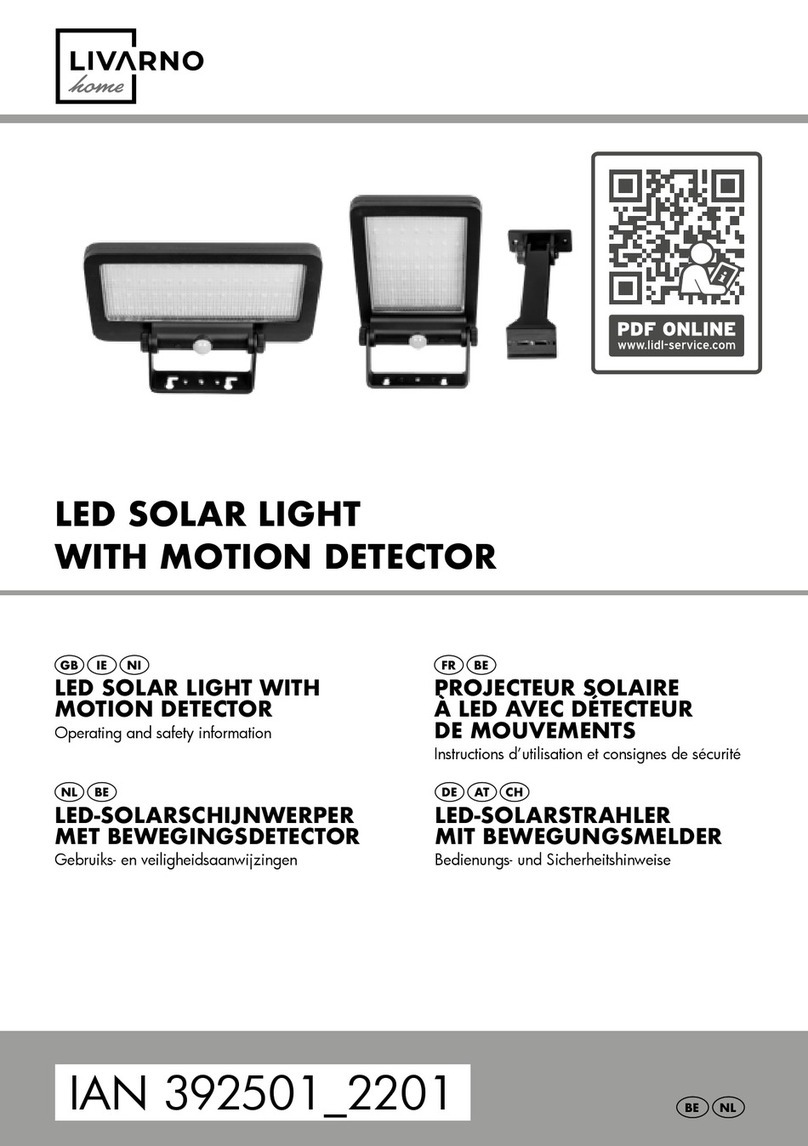
LIVARNO home
LIVARNO home 1020-B manual

CY Lighting
CY Lighting EAGLE-3000 user manual
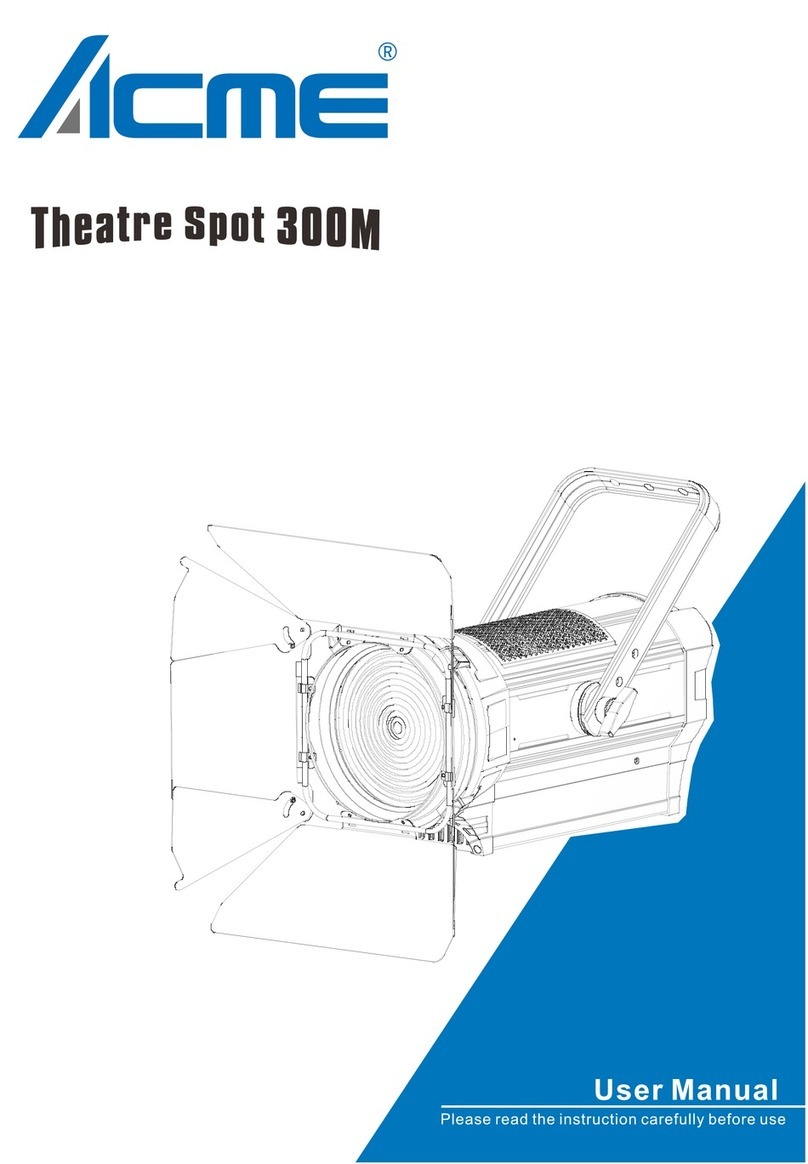
ACME
ACME Theatre Spot 150m user manual
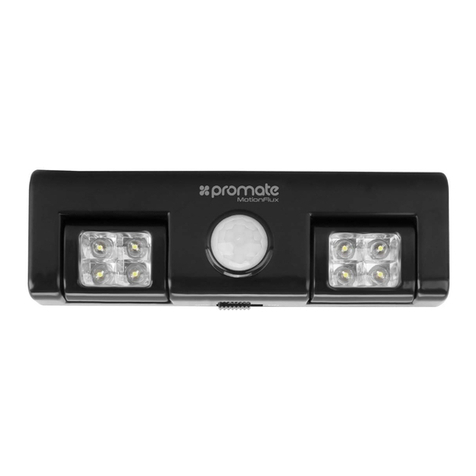
Promate
Promate MotionFlux user guide

HybridLight
HybridLight 200 HYBRID TOWER Installation and user instructions

Home Accents Holiday
Home Accents Holiday TY005-2011 Assembly instructions
